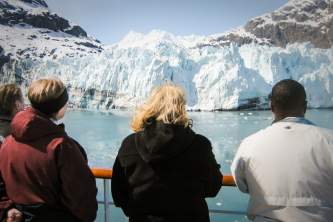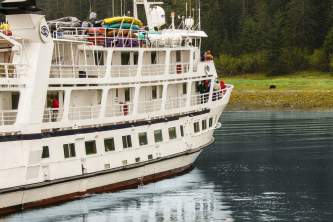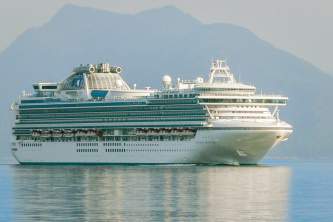Photo Credit: Deirdre Downey
Which Departure Port?
With a classic Inside Passage cruise, you usually get a choice of two ports: Seattle or Vancouver. Each has its pros and con—and here's how to figure out which is better for you:
Choose Seattle if:
- You love “at sea” time. Seattle itineraries sail in the Pacific and don’t enter the Inside Passage until north of Vancouver Island, which means a couple days of at-sea time. Some people relish that down time, for making the most of shipboard activities.
- You don’t want to deal with a passport. Even though you're not staying in Vancouver, you need to show your passport just to transfer through its port.
Choose Vancouver if:
- You tend to get seasick. Vancouver you will sail entirely in the Inside Passage, where the waters are very calm. You will have two spots—one at the northern tip of Vancouver Island and the other at the northern tip of the Queen Charlotte Islands—where you can have some rough water, but it's no more than a few hours in each case.
- You want more scenery. Unlike the route from Seattle, this itinerary stays behind Vancouver Island and stays more along the coastline, with more opportunities for wildlife and landscape views.
Want something different?
If you do a one-way, Cross-Gulf Cruise, you’ll still either leave or return to Seattle or Vancouver, but the other end of the trip will be through an Alaskan port (usually, Whittier or Seward). In those cases, you can even choose 14-day itineraries, with one end out of San Francisco or San Diego Choose the one-way strategy if:
- You want to add a land tour , which is easy to add on the Alaskan port end of the cruise. Then, you can explore more areas, such as Denali, Talkeetna, the Kenai Peninsula and more.
- You want more coastline and glacier s. Almost half the people who take th is route do so for the scenery; they don’t even add a land tour.
- The only downside? You’ll need to fly one-way to or from Alaska, which can be more expensive than flying round-trip into Seattle or Vancouver.




